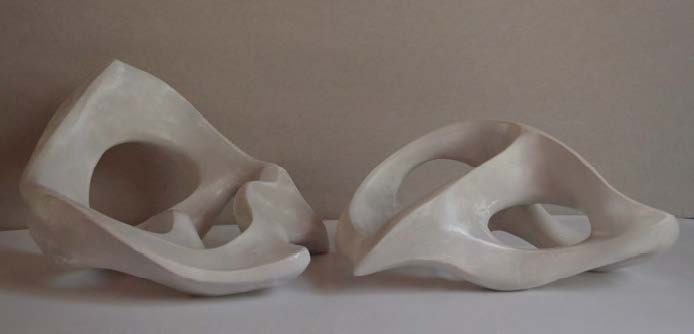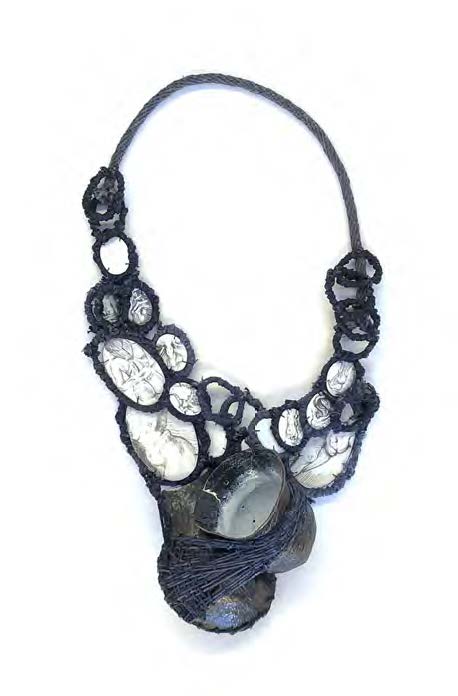Critical MAS: Robin Seloover on Marilyn Perry’s “Subtle Body Diptych” and Paige Van Doren’s “I Carry This With Me”


Written by Robin Seloover
Nabokov wrote something like: “There is no reading, there is only re-reading.” Artists Marilyn Perry and Paige Van Doren approach the forms of the human body in a similar manner, through the lens of re-reading, memorizing, re-membering. Both artists examine the structure and contents of the body: as imagined, as real, as historical; as archaeological remnant and as container for the intimate.
Perry’s sculptures are lyrical in line and fluid in movement. Edges are worked, sanded and polished, asking for the hand to brush across the surface. Openings in the forms suggest remains, as if sun bleached, sand-worn bones have been left behind. Parts are missing – ball joints and cartilage – suggesting an absence without the sadness.
Van Doren’s “I Carry This With Me” documents bodily locations: an ear, a rounded backside, breasts and soft belly, a foot. The artist has drawn in enamel on forged copper disks, creating graphite-like lines on a hardened white ground, records of the female body. Each drawing is framed by black cording, wrapped, twisted and tied. Two containers hang at the lowest point of the necklace. I imagine them laying against the wearer’s chest, close to the voice and the beat of the heart. The cup-like form is inscribed with the words “I carry this with me.” The other form is pinched at the neck, nearly sealed.
I can feel the repetitive movements made by each artist, Perry’s polishing and Van Doren’s wrapping. All making is layered with effort. I sense the reading and re-reading of histories, and of the material forms imbued with touch.
What do any of us carry with us and what do we leave behind?
To learn more about the writing in the Critical MAS series, go to Critical MAS: Introduction.